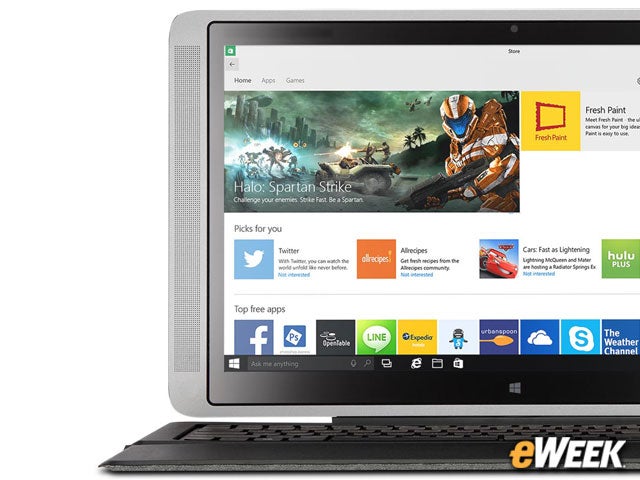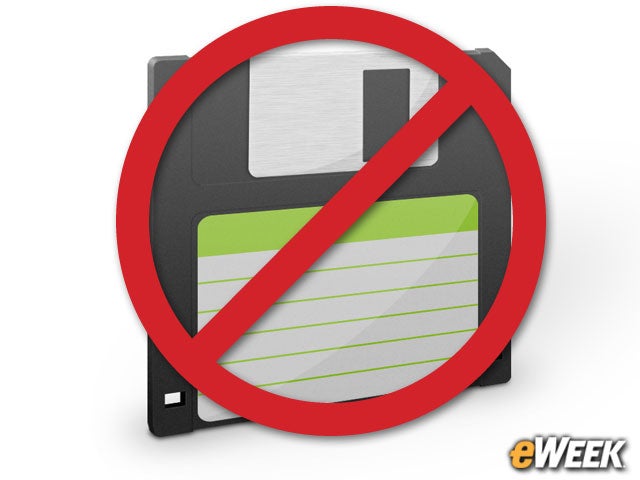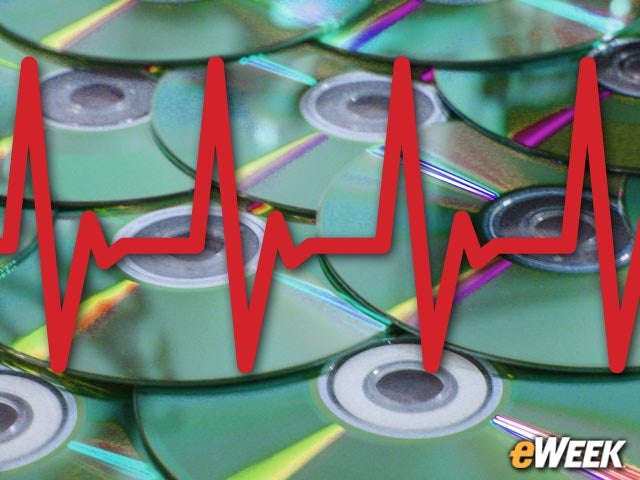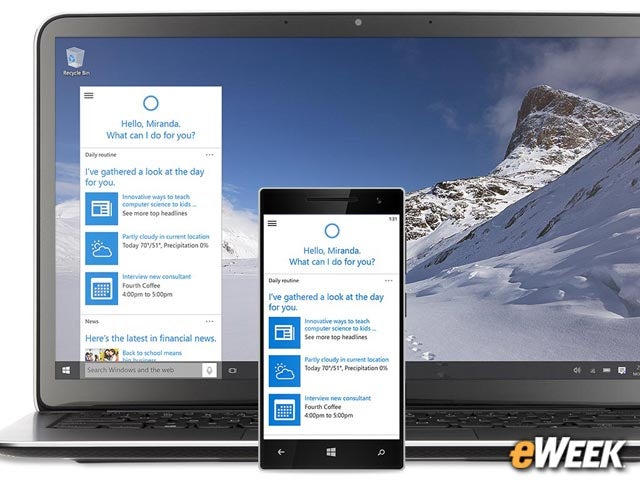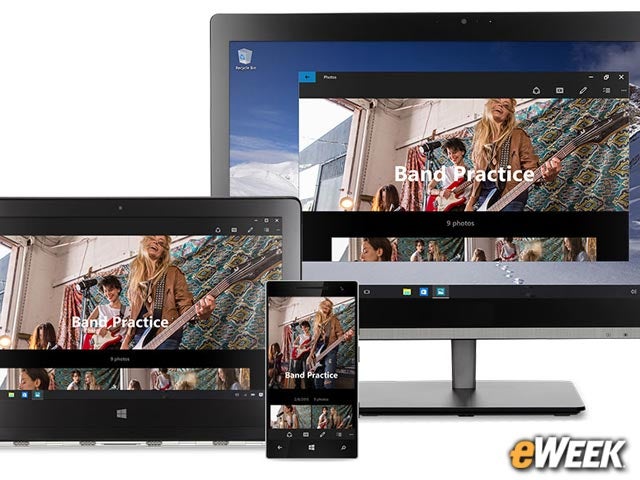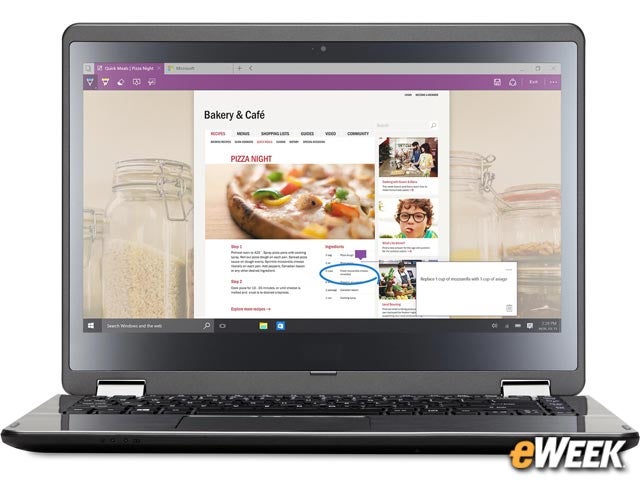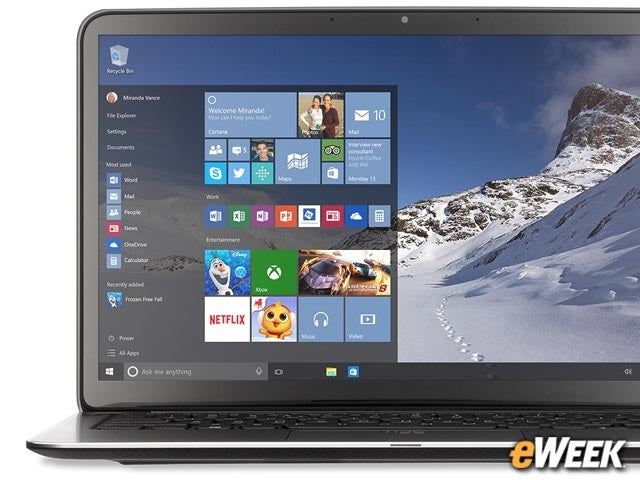eWEEK content and product recommendations are editorially independent. We may make money when you click on links to our partners. Learn More.
2Let’s Get the Basics Out of the Way
Let’s get the basics out of the way: Windows 10 is a new operating system that will replace Windows 7 and Windows 8.1. Why Microsoft didn’t use the Windows 9 branding isn’t entirely clear. But it’s apparent that Microsoft wanted to make a clean and complete break from the previous generation of Windows. What we do know for sure is that the platform will be available as a free upgrade to users of Windows 7 and Windows 8 on July 29.
3At Long Last, Floppy Disks Are (Nearly) Dead
Microsoft isn’t yet ready to officially declare that the floppy disk is dead, but it might as well have done so. Out of the box, Windows 10 will not support floppy disks or third-party accessories that allow users to input floppy disks. Instead, the company says that users will need to find drivers that will allow the accessory to work. Whether such drivers will be available at release time—or ever—remains to be seen. But this might be a good time for the last floppy disk on the planet to update to DVDs, hard drives or even cloud storage.
4Oddly, DVDs Are on Life Support, Too
In an odd twist, Microsoft has said that DVD support will be somewhat limited. While the operating system will readily handle DVDs as storage devices, those who want to use DVDs to play back videos will need “separate playback software.” A key reason is that Windows 10 lacks Windows Media Center or another platform that would allow for playback. So, if users are looking to watch DVD movies on their Windows 10 boxes, they’ll need to get other software before doing so. An end of an era, perhaps?
5What to Know About Cortana
Microsoft’s Cortana virtual personal assistant will feature prominently in Windows 10. The platform will work across Windows devices and allow users to ask queries, set alarms and perform tasks. In addition, the service will set reminders and as it learns a user’s habits, and suggest everything from news to actions it could take to be more useful. Look for Cortana to be a handy companion in Windows 10.
6There Will Be Multiplatform Support
Microsoft has made it abundantly clear that it wants Windows 10 to be the platform that runs on any and all devices. That means Windows 10 will work and look the same on a desktop, laptop, two-in-one notebook and tablet. That’s something that was glaringly missing from Windows 8.1 and a feature that will help Microsoft attract more enterprise customers in the long run as they think about user productivity and reducing training requirements.
7Internet Explorer Gets Edged Out
The browsing experience in Windows 10 will be entirely different. Microsoft has decided to retire Internet Explorer—its browser brand for two decades—in favor of a new platform called Edge. The browser is not only faster and less cluttered, but it also works with Cortana to provide users with instant access to a range of features, including automatically making reservations and finding restaurant reviews. Look for Edge to be the most advanced browser Microsoft has offered yet.
8Xbox Will Make Its Presence Felt
Although there has been some speculation that Microsoft would sell its Xbox division, it’s clear now that won’t happen. Microsoft has said that Xbox will play a critical role in Windows 10, giving users an array of features, including the ability to get onto Xbox Live, to record game play and to stream games from Xbox One to a Windows 10 device anywhere in the home.
9The 2-in-1 Craze Will Only Get Bigger
Microsoft has said that Windows 10 is much smarter than previous versions of its operating system. Central to that is the company’s Continuum platform. According to Microsoft, Continuum will be able to automatically determine whether a person using a two-in-one is in tablet or notebook mode. The operating system will automatically adapt to ensure it delivers the best experience based on the mode it’s in.
10Biometric Authentication Get’s Baked Into Windows
Windows Hello will be a crucial feature for enterprise users. Hello adds biometric authentication to Windows 10, letting users unlock their computer with a fingerprint, iris or face. The feature is built into Windows 10, so it can also be used to open apps, Websites or even data within folders. Perhaps most importantly, because Windows Hello is a software feature, it’ll work with devices that already have biometric sensors.
11Windows 10 Really Isn’t Free for Everyone
There appears to be some confusion over exactly how Microsoft will handle pricing on Windows 10. The company has said publicly that the operating system will be available as a free download to Windows 7 and Windows 8.1 users. However, that is only available for the first year when users are upgrading. Customers ordering a new PC or upgrading from a device running an operating system older than Windows 7 will have to pay $119 for Windows 10 Home and $199 for Windows 10 Pro. Upgrading from Home to Pro will cost customers $99. So, while Microsoft has made a fuss about Windows 10 being “free,” let’s be sure to clarify that that’s only the case in some circumstances.

